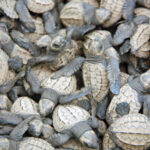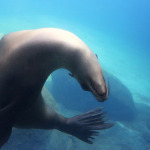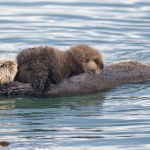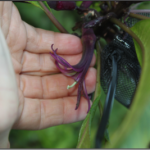A few weeks ago, I was thinking about my beat.
Today, it’s pretty obvious: I’m grooving with whales. I’m twitterpated (again).
In elementary school, we watched videos about whaling (I went to a progressive school…). After seeing the videos, I — all of 11 years old — wrote to Greenpeace, wanting to help the whales.
But as I grew up, the gentle animals swam to the periphery of my mental map.
Until now.
In November, I wrote a story about tracking whales using fluke-IDs that appeared in the Santa Cruz Sentinel. I’m working on a second whale story for the Sentinel, about how underwater sounds — the Navy’s sonar, in particular — affect marine mammal behavior.
Then I wrote about whales being hit by ships, for a class.
My story appeared in the San Jose Mercury News. And in the Miami Herald. And in newspapers in Washington, Louisiana, Kentucky, and Missouri — and all over California. Turns out, people care about whales, even in states without a coastline.
Then, on Friday, one of the scientists I spoke to for the whale-ship story sent me this link:
http://www.cascadiaresearch.org/InjuredWhale-SPS-1Dec10.htm
It contains information on an injured whale spotted swimming off the coast of Washington state — “gruesome, and one of the worst injuries” he’d ever seen on a living whale, thought to be the result of a ship-strike. There are photos. They are horrific. It’s your choice to follow the link.
“What else could do that to a whale?” I asked.
Killer whales or explosive harpoons, was the answer.
But one of the wounds is definitely from a propeller. And scientists think the large, missing chunk might also have been ripped off by a boat.
Yesterday, the whale washed up dead. Necropsy is scheduled for Monday. [updated: there are other injuries not visible in the photos that are likely ship-related.]
Who is covering this story? The Associated Press. Newspapers in Washington state.
And me, in my own little way.
More links:
1. New NOAA Fisheries shipping regulations on the east coast, in response to increasing right whale mortality from ship-strikes.
2. Even the International Whaling Commission is paying attention. Check out their info brochure.
3. The San Jose Mercury News story.
4. The U.S. Coast Guard’s Port Access Route Study comment page, where public comments on the whale-ship issue can be uploaded until Jan. 20, 2011.
5. The Santa Cruz Sentinel story.
6. The Cascadia Research Collective’s website. Based in Olympia, Wash., the collective studies threatened marine mammals and…bats!







I remember you at age 11! And am glad the AP is covering this horrific story with its even more horrific photos — some of the most disturbing I have ever seen, by the way. And am glad the gentle whales are back in the forefront of your ‘mental map,’ because your ‘little way’ is actually a big way of helping to save them. Good and responsible journalism is a powerful tool, and you and your scicom ten slugs can and are using that tool to make a difference and help make this world a better place.
Keep the beat.
Thank you so much for posting this piece.